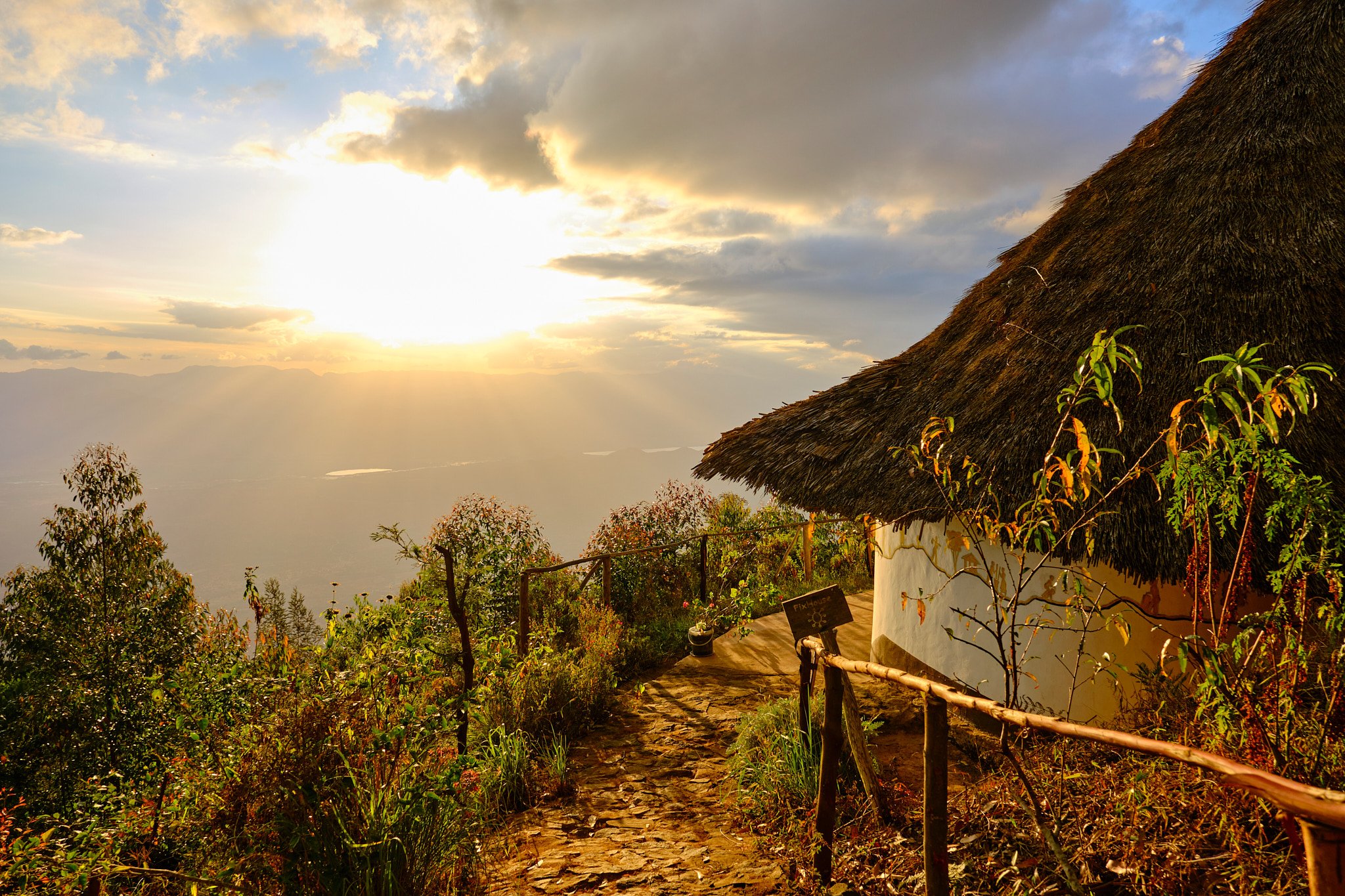Usambaras
The Usambara Mountains, which stretch across northeastern Tanzania parallel to the Kenyan border, are part of the Eastern Arc mountain range—one of the oldest mountain ranges in the world, far older than Kilimanjaro.
Originally, the Usambaras were mostly covered in forests. However, logging and population growth have reduced the rainforest to less than a quarter of its original size. Despite this, what remains is impressive: over 2,800 plant species—one-quarter of them endemic—more than 50 species of endemic trees, and numerous endemic animal species. With their dense forests, the Usambaras remained largely unexplored for a long time. Even today, they are not on the main tourist routes, meaning travelers can experience an authentic piece of Tanzania here.
A visit to the Usambaras is also worth it for the varied landscapes, characterized by terraced farming and dramatic views over vast valleys. Many things here are different from the rest of Tanzania, including the architecture. The mild climate and the absence of malaria led the German colonial rulers to consider making Lushoto, a town in the Usambaras, the capital of German East Africa. Today, fruits, berries, and vegetables are cultivated here year-round.
The Usambara Mountains are perfect for an active vacation, such as hiking through the rainforests. It’s a great contrast to the time spent in national parks, where visitors often long for some physical activity. Browse the photo-gallery below to get a better idea of the Usambaras or return to the destinations overview by clicking here.
Tanzania Map Highlighting Usambara Mountains
Terraced agriculture in the Western Usambaras
A village in the Western Usambaras
Terraced farming in the Western Usambaras
View of the valley below
View of the valley below
Terraced farming in the Western Usambaras
View from on of the cabins at Mambo View Point
Cabin overlooking the valley at Mambo View Point
Cabin at Mambo View Point
View of the valley from Mambo View Point
View from on of the cabins at Mambo View Point towards Mkomazi N.P.
Cabin at Mambo View Point
View of the valley from Mambo View Point
Terraced farming at Mambo village
Mambo village
Anna with Children of Mambo village
Anna with Children of Mambo village
Lizard
Chameleon
Rooster
Terraced farming at Mambo village
One of Mambo View Point's cabins on cliff overlooking valley
Leonie, Anna, and our guide on the cliff walk
Mambo cliff walk
Mambo cliff walk
Mambo cliff walk
Mambo View Point (on cliff in center of picture)
Mambo View Point (on cliff on the right) overlooking the valley
Cabin at Mambo View Point
Anna socializing with school girls at Mambo
Children riding unicycles on Mambo sportsfield
Children riding unicycles on Mambo sportsfield
Farming near Shagayu forest
Farmhouses at entrance to Shagayu forest
Cow stable near Shagayu forest
View of Mtae village with Mkomazi N.P. in the background
Entering Shagayu forest
On trail in Shagayu forest
On trail in Shagayu forest
Small waterfall in Shagayu forest
On trail in Shagayu forest
Looking towards Mkomazi N.P. from Shagayu forest
Farmhouses at entrance to Shagayu forest
Farmhouses at entrance to Shagayu forest
Looking towards Mkomazi N.P. from Shagayu forest
Morning clouds at Mambo View Point
Mtae village in clouds in the early morning
Decent from Mtae to Langoni
Decent from Mtae to Langoni
Villages on ridges of Western Usambaras
Decent from Mtae into Mkomazi valley
Donkey caravan at Langoni
Drying racks for sisal fibers
Sisal plantation underneath Western Usambaras
In the Eastern Usambaras
Anna with chameleon
In the Eastern Usambaras
Maize and teak plantations in the Eastern Usambaras
Sisal plantation near Korogwe




























































